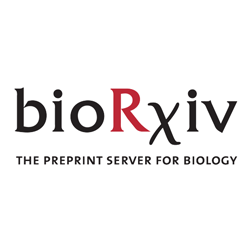
Gabriella Estevam
@GabbyEstevam
Followers
86
Following
130
Media
8
Statuses
23
Joined December 2018
We support active peer review and are excited to hear thoughts/feedback! (6/6)
1
0
0
Huge thank you and shoutout to the @fraser_lab, our amazing collaborators @JuraLab_UCSF, Dr. Eric Collisson, @hjpimentel @willowcoyote @capra_lab, and the brilliant minds (@Ed_Linossi @JingyouR @protostasis @ashrayaravi @karsonchrispensshow) that contributed to this work! (5/6)
3
0
2
Lastly, by augmenting a PLM with biophysical and chemical features, we (@ashrayaravi @karsonchrispensshow @fraser_lab @capra_lab) show improvement in the prediction of our inhibitor-treated datasets and in the future aim to further improve and apply this framework. (4/6)
2
0
2
Kinase inhibitors are chemically distinct, but they also fall into groups of structural similarity. By comparing mutational profiles both within and across these groups we can identify patterns of resistance and counter-sensitivity that can inform inhibitor usage and design.(3/6)
1
0
1
By examining crizotinib’s mutational profile, we identify known and potentially rare resistance mutations, in addition to structural regions of sensitivity. We then apply a similar analysis strategy to the other screened inhibitors to understand each unique profile. (2/6)
1
0
1
While many recurrent resistance mutations have been identified, experimental responses of rare mutations to various different inhibitors is limited, so we began by screening a nearly comprehensive library of MET kinase domain mutations against 11 inhibitors. (1/6)
1
1
1
Mutations in the kinase domain of RTKs like MET can drive disease. Small molecule inhibitors target these mutations, but acquired resistance poses a challenge. In our latest preprint, we've extended our previous 🧬DMS of MET to study this exact problem.
biorxiv.org
Mutations in the kinase and juxtamembrane domains of the MET Receptor Tyrosine Kinase are responsible for oncogenesis in various cancers and can drive resistance to MET-directed treatments. Determi...
1
10
18
Meet Rosace, a robust deep mutational scanning analysis tool that incorporates positional information and mean-variance shrinkage. Check it out if you are running DMS experiments or handling DMS data! (1/n) https://t.co/yC4rq0Fk3R
biorxiv.org
Deep mutational scanning (DMS) enables functional insight into protein mutations with multiplexed measurements of thousands of genetic variants in a protein simultaneously. The small sample size of...
1
21
52
(6/6) Huge thanks to @fraser_lab @JuraLab_UCSF @willowcoyote @Ed_Linossi @protostasis @carla_alumine @jmmichaud and Eric Collisson!
0
0
4
(5/6) We support active peer review! Your feedback and thoughts are valued and welcomed.
1
0
4
(4/6) Our comparative analysis hopefully acts as a resource of activating and sensitizing mutations in two clinically relevant backgrounds. We hope this will aid in the future development of novel and more effective therapeutic strategies against MET-driven diseases.
1
0
1
(3/6) Additionally, we identified a β5 motif, serving as a key pivot for MET kinase domain activation, and potentially extending its importance to other kinases.
1
0
2
(2/6) One major finding is a hydrophobic interaction between a juxtamembrane segment and the kinase αC helix. This regulatory mechanism sets MET apart from other receptor tyrosine kinases (RTKs), offering insights into MET’s activation process and its role in health and disease.
1
0
3
(1/6)🧬 In this study, we delved into the MET kinase domain behavior through a comprehensive, comparative deep mutational scan (DMS) in two intracellular backgrounds: wild type and exon 14 skipped.
1
0
2
Preprint Announcement! We’re excited to share our research on the mutational landscape of the MET kinase domain! 👉 https://t.co/nyJe92COQR
biorxiv.org
MET is a receptor tyrosine kinase (RTK) responsible for initiating signaling pathways involved in development and wound repair. MET activation relies on ligand binding to the extracellular receptor,...
2
10
30



